Federal Budget: NSW to receive $7.3 billion to roads and rail projects to ease congestion
The Coalition is spending big on infrastructure across the country and NSW will reap the benefits with $7.3 billion to be poured into new road and rail projects. Congestion will also be targeted with the Federal Budget outlining significant new measures to slash travel times.
- Budget 2019 sets up for May election
- Budget 2019: High-speed rail a top priority
- Tim Blair breaks down Treasurer’s Budget speech
A total of $100 billion is being injected into the nation’s roads, rail and skies, with the Treasurer noting the Government’s strong financial position has allowed them to make bold investments to ease pressure on booming cities and get commuters moving quicker.
NSW will reap the benefits, with $7.3 billion to be poured into new road and rail projects in the state over the next 10 years.
And the federal Government has identified congestion as a key issue for voters across Australia at the upcoming election and this has been reflected in the Budget, which contains significant new measurers to slash travel times.
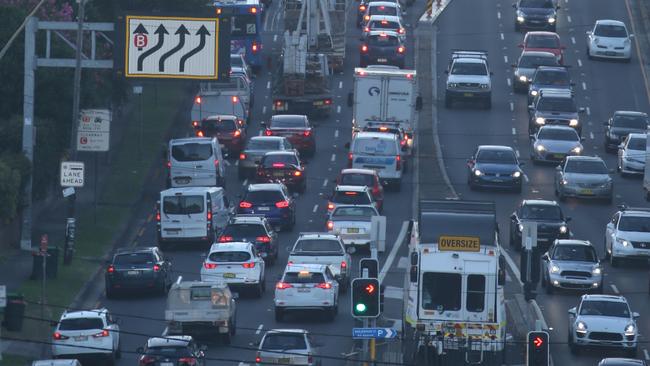
MORE FEDERAL BUDGET NEWS
Budget: The winners and losers
Mental health gets crucial boost in Budget
Christmas Island detention centre to close again
These traffic-busting projects are being paid for from the Urban Congestion Fund, which has increased fourfold to $4 billion, with NSW to receive a $254 million slice of this package.
The $100 billion being pumped into the National Infrastructure Plan is a 25 per cent increase on the amount pledged to road, rail and air building projects in the last Budget.
Of the $7.3 billion committed to road and rail transport projects in NSW over the next decade, $3.5 billion will go towards the first stage of the Western Sydney North South Rail Link and $1.6 billion is being put aside for a critical Newcastle bypass — the M1 Pacific Motorway Extension to Raymond Terrace.
There is also $400 million to improve safety on the Newell Hwy, while $500 million has been allocated to the Princes Hwy and the M12 motorway has secured $405 million.
The Government is also putting up $496 million for road projects that have been earmarked as being of “strategic importance”, including $300 million for the Toowoomba to Seymour corridor that runs through NSW and another $140 million for the Tenterfield to Newcastle route.
Meanwhile, travel times across NSW will be slashed with the Government making a concerted investment in congestion-busting projects.
This includes $95 million to reduce travel times on The Horsley Drive and $50 million for King Georges Rd.
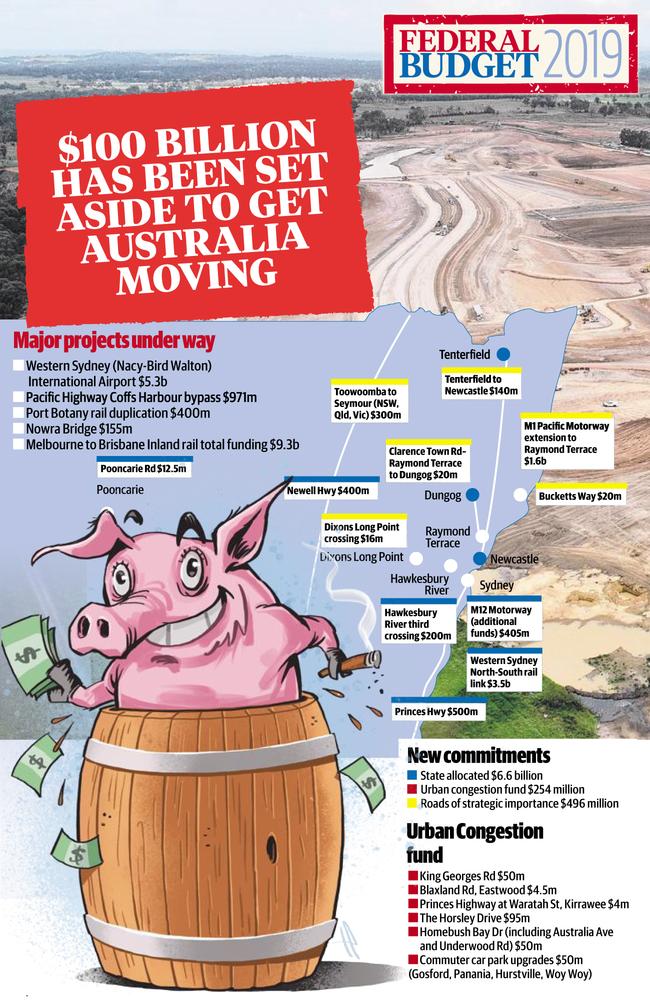
Another plank in the fight to unstick traffic jams is the $500 million for commuter carparks in NSW and Victoria, with Treasurer Josh Frydenberg promising the changes will take tens of thousands of cars off the roads and improve access to public transport.
In NSW, there will be $30 million for Gosford, $5 million for Woy Woy, $7.5 million for Panania and $7.5 million for Hurstville.
“We know you want to be there for the school drop off, to help the kids with their homework and spend more time together at the dinner table,” Mr Frydenberg said.
“This (congestion) fund will focus on immediate, practical measures to cut travel times within our cities. Removing bottlenecks and improving travel corridors.”
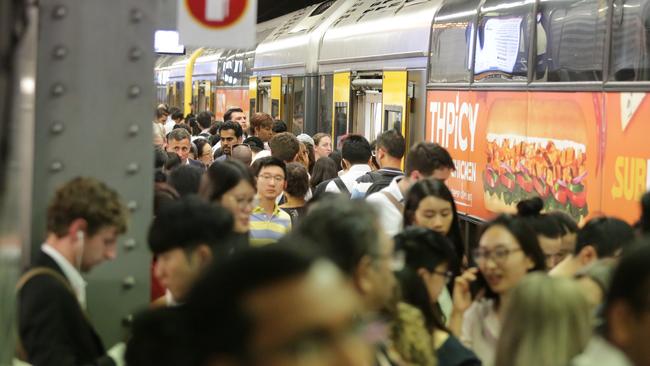
Ongoing investment in other infrastructure projects includes the Western Sydney International Airport, which has $5.3 billion attached to it. The infrastructure investment in NSW equates to 28.8 per cent of the total across Australia, just below the 32 per cent of the population that live in the state.
Mr Frydenberg said the new infrastructure agenda was significant and marked the next stage of the Government’s economic plan.
“Our strong economy needs ongoing investment in roads, rails, bridges, dams and ports,” he said.

Mr Frydenberg noted the boost in infrastructure spending had come without increasing taxes. “Cranes, hard hats and heavy machinery will be seen across the country, as we build Australia for current and future generations,” he said.
Mr Frydenberg said the “long-term, fast-rail vision” is central to the infrastructure plan for Australia.
Victoria is a major winner of this plan, receiving $2 billion in the Budget for the project to travel from Melbourne to Geelong.
In NSW the area earmarked for fast-rail are Sydney to Wollongong, Newcastle, Bathurst, Orange and Parkes.
“We are getting on with the job of building infrastructure,” Mr Frydenberg said.
NURSING A GRIEVANCE ON ROAD TOLLS
Elizabeth Holland is already feeling the pinch of the choking congestion on Sydney’s roads.
Just a month into her job as a registered midwife, Ms Holland is spending around $10 a day on tolls to get between her home and workplace.
That adds up to a big chunk of her base annual salary of around $52,000, but she feels like she has little choice because if she did not use toll roads her 25-minute trip would blow out to much longer — something she certainly does not need after a 10-hour night shift.
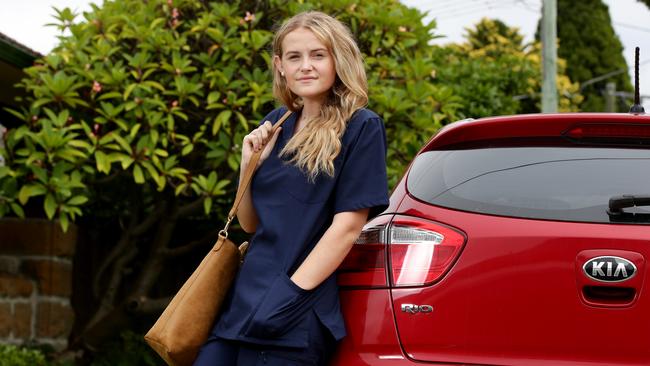
“I use the M4 to get to work, and the tolls for this are absolutely mind-blowing,” the 21-year-old said.
“I find it frustrating that I have to pay so much just to be able to drive to the hospital at which I work.
“If I don’t use the M4 my trip home is significantly lengthened, which is not really safe or ideal after a night shift.
“I would love for the next federal government to prioritise healthcare and equity of access — including social infrastructure such as the M4.”
— Adella Beaini
COALITION ROLLS OUT BARREL ON KEY SEATS
Scott Morrison will use the largesse from surging iron ore and coal prices to deliver an 11th hour cash splurge in a bid to win voters in marginal seats.
From multibillion-dollar infrastructure spends in the battleground states of Victoria and Queensland to a one-off fund to refurbish school playgrounds and libraries — there is a sweetener for everyone.
Treasurer Josh Frydenberg has squirrelled away an election war chest that is hidden in unspent cash committed to a series of “funds” such as the Better Regions and Local School Community funds
Mr Frydenberg announced an extra $3 billion for the Urban Congestion Fund to fix bottlenecks around cities. It also carves out $500 million to build carparks around public transport corridors, a cheap commuter favourite.
In a desperate bid to win back female voters he threw more than half a billion dollars into a series of gender equality initiatives, including $150 million to build women’s change rooms at sports clubs, $12 million to encourage girls to take up tennis and $5 million for the Country Women’s Association.
The School Community Fund has $30 million to be spent this year, which Mr Frydenberg said would go to projects such as upgrades to libraries, classrooms and play equipment. In NSW, the Coalition has promised $235 million for a new Hawkesbury River crossing as well as two commuter carparks in the Central Coast seat of Robertson, which Liberal Lucy Wicks holds with a wafer-thin margin.
The Coalition is throwing everything at stealing from Labor the country’s most marginal seat of Herbert in Queensland. It got more than $500 million for road upgrades, an expanded detox program and $15 million for the Cowboys’ High-Performance Centre.
Queensland’s next most marginal seat of Capricornia was handed $250 million for a road corridor and $3.9 million to help Rockhampton secure the Beef Australia 2021 national exposition.
A Victorian infrastructure blitz will help Coalition minister Alan Tudge and conservative powerbroker Michael Sukkar. Assistant Minister Sarah Henderson got $700 million for the South Geelong to Waurn Ponds rail upgrade. Health Minister Greg Hunt, facing a battle with Liberal defector Julia Banks in Flinders, has found $1.8 million to help establish an Integrated Youth Services Hub.
MEASURES TO STOP THE INCOME SUPPORT RORTERS
It will become harder to rort the income support payment system with the government shaking up the reporting measures in a move that is expected to save $2.1 billion over five years.
About 1.2 million Australians receive income support payments, such as those on Newstart, and their payments are currently worked out based on the income they expect to receive from any hours they work over a fortnight.
But from July 2020 they will be required to report the income they receive after they have worked.
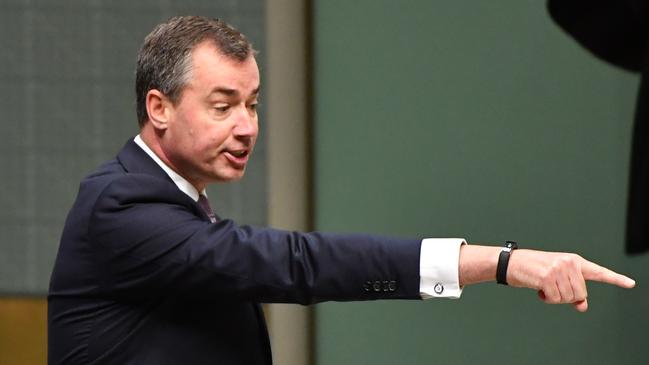
It’s hoped this will reduce overpayments and underpayments and the ability of people to deliberately mislead the system in a bid to get higher payments.
The Department of Human Services, led by Minister Michael Keenan, is also migrating these people onto the Single Touch Payroll system, which means their employer will send their payment amounts to the Australian Taxation Office which will pass it on to the department. This will also reduce discrepancies.
The Budget forecast the $2.1 billion in savings from 2018-19.
“The resulting efficiencies will be redirected by the Government to repair the budget and fund policy priorities,” the papers say.
— Rose Brennan
FUNDING GOES NUCLEAR
Sydney’s Lucas Heights nuclear facility will be given $56.4 million in funding in the wake of recent radiation leaks and workplace accidents.
The money will support nuclear medicine production, critical radioactive waste management and nuclear decommissioning activities.
The government will also provide a further equity injection of $56 million to ensure protection of the community and also the environment.
A serious incident investigation into a radiation leak at the facility was completed several months ago and highlighted a number of problems.


